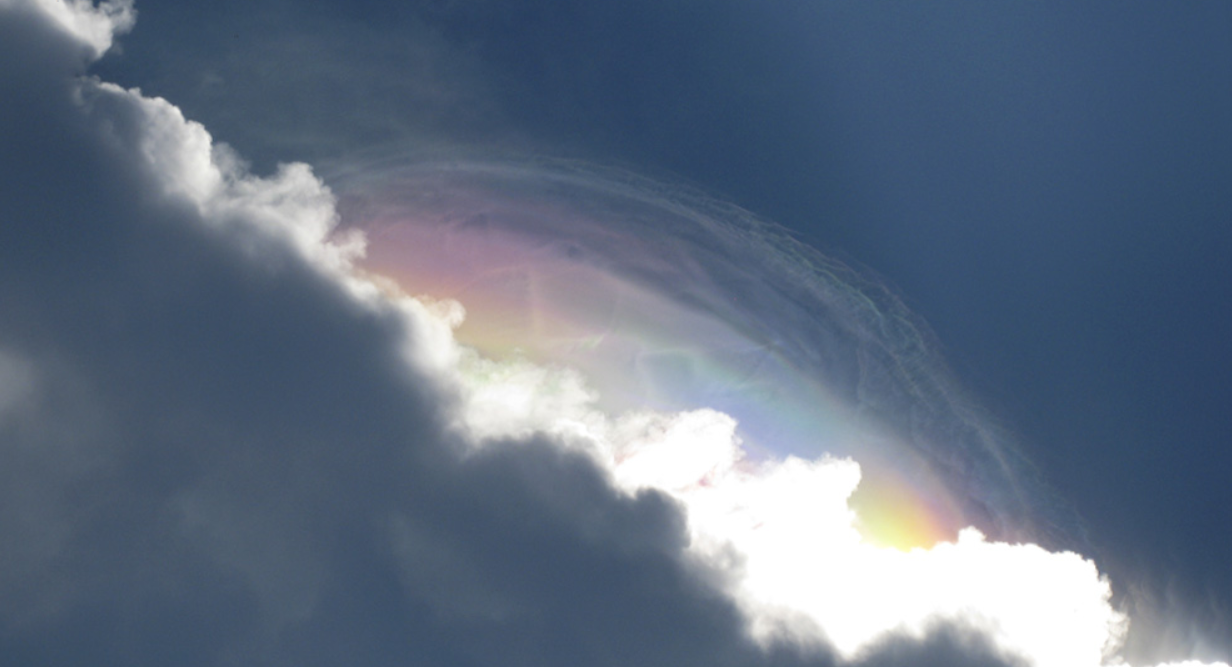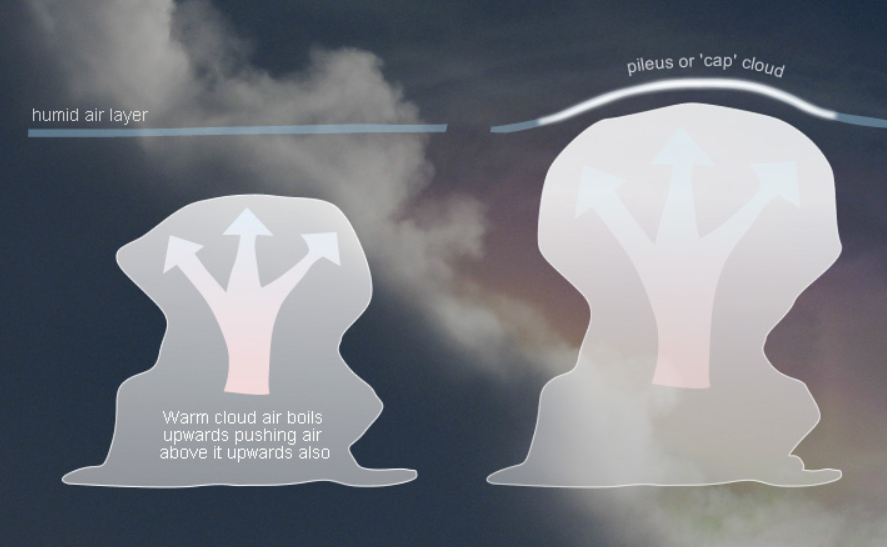Iridescent Pileus
Iridescent Pileus: A Captivating Display of Colors in the Sky
When it comes to atmospheric optics, one phenomenon that never fails to captivate observers is the iridescent pileus cloud. Named after its resemblance to a cap, this cloud formation is characterized by its thin and uniform droplets, making it an ideal canvas for producing bright and vivid iridescent colors through diffraction.
Pileus clouds often form above cumulus clouds, which are characterized by their towering and billowy appearance. As warm air convects upwards within a cumulus cloud, it pushes the air layers above it upwards as well. This rising air expands and cools adiabatically, creating the perfect conditions for the formation of a pileus cloud.
In some cases, there may be a thin layer of humid air situated above the cumulus cloud. As this layer is forced upwards by the rising air, it undergoes expansion and cooling. The water vapor present in this layer condenses into droplets, giving rise to a thin cloud layer that sits like a cap or pileus over the cumulus cloud.
What makes the iridescent pileus cloud truly mesmerizing is the presence of diffracted sunlight, which manifests as bright iridescent colors. These colors are at their strongest when the droplets responsible for diffraction are small and similar in size. The newly formed droplets in the pileus cloud, all originating from a similar source, possess these characteristics, making them ideal for creating an iridescent display.
The phenomenon of iridescence itself is a result of light waves being scattered and diffracted as they interact with the tiny droplets in the cloud. When sunlight passes through these droplets, it gets bent and split into its component colors, similar to what happens when light passes through a prism. The different colors of light then interfere with each other, creating the stunning array of iridescent hues that we observe.
The precise mechanism behind the formation of iridescent colors in the pileus cloud is a fascinating subject of study. Scientists continue to investigate the interplay between droplet size, shape, and the angle of sunlight to better understand the intricate physics behind this optical phenomenon.
While iridescent pileus clouds are relatively rare, they provide a breathtaking display of nature's artistry. Their transient nature and ever-changing colors make them a sight to behold, often leaving observers in awe of the beauty found in the sky above.
In conclusion, the iridescent pileus cloud is a remarkable atmospheric optics phenomenon that showcases the magic of diffraction and the interplay of light and water droplets. Its formation above cumulus clouds and the presence of uniformly sized droplets create the ideal conditions for vibrant iridescent colors to manifest. Whether you have the opportunity to witness this spectacle firsthand or admire it through photographs, the iridescent pileus cloud is a testament to the wondrous and awe-inspiring nature of our atmosphere.

Iridescent Pileus Cloud ~ Imaged by Alana Drew at Vero Beach, Florida. ©Alana Drew, shown with permission.
Pileus or 'cap' clouds are thin, freshly formed and with uniform sized droplets. They are ideal to produce bright iridescent colours by diffraction.

A cumulus cloud containing warm air boils, convects, upwards.
Air layers above the cloud are also pushed upwards by the growing and rising cumulus.
Rising air expands and adiabatically cools .
Sometimes there is a thin layer of humid air above the cloud. As that layer is forced upwards it expands and cools. Water vapour in it condenses into droplets. The resulting thin cloud layer sits as a cap or pileus over the rising cumulus.
The bright iridescent colours seen in pileus are diffracted sunlight. Iridescent colours are strongest when the diffracting droplets are small and similar in size. The newly formed pileus droplet all of similar provenance are ideal for iridescence.

Note: this article has been automatically converted from the old site and may not appear as intended. You can find the original article here.
Reference Atmospheric Optics
If you use any of the definitions, information, or data presented on Atmospheric Optics, please copy the link or reference below to properly credit us as the reference source. Thank you!
-
<a href="https://atoptics.co.uk/blog/iridescent-pileus/">Iridescent Pileus</a>
-
"Iridescent Pileus". Atmospheric Optics. Accessed on November 21, 2024. https://atoptics.co.uk/blog/iridescent-pileus/.
-
"Iridescent Pileus". Atmospheric Optics, https://atoptics.co.uk/blog/iridescent-pileus/. Accessed 21 November, 2024
-
Iridescent Pileus. Atmospheric Optics. Retrieved from https://atoptics.co.uk/blog/iridescent-pileus/.